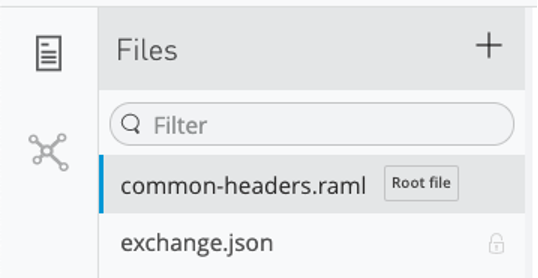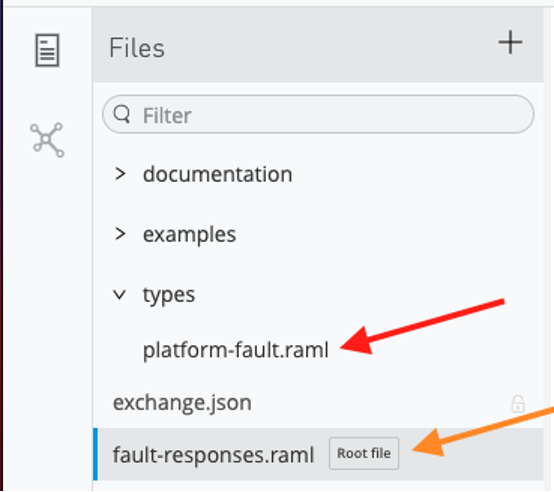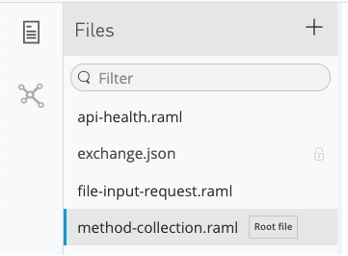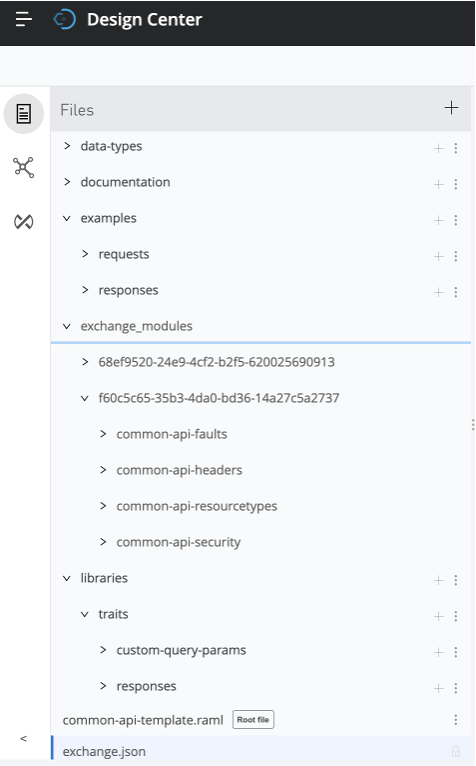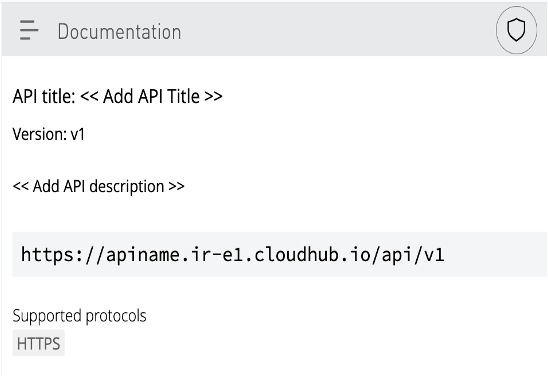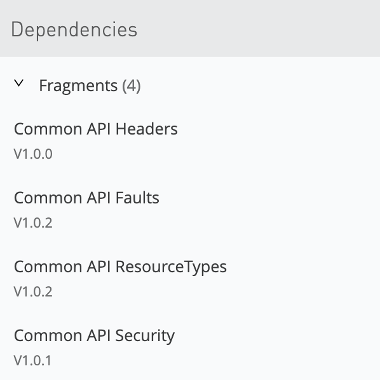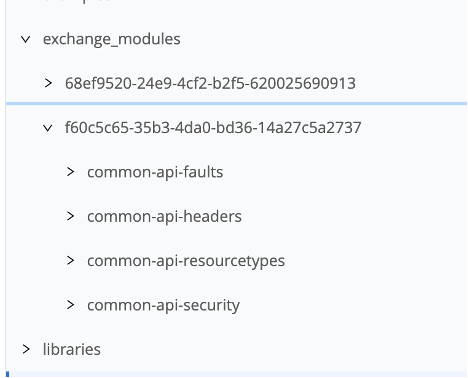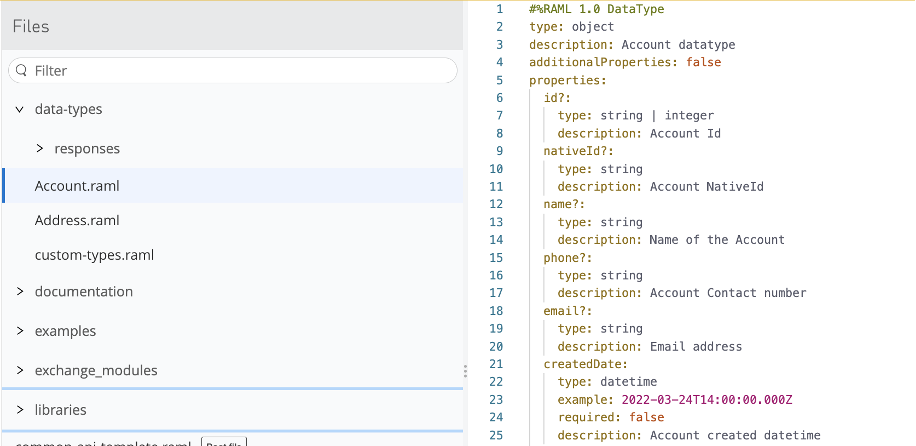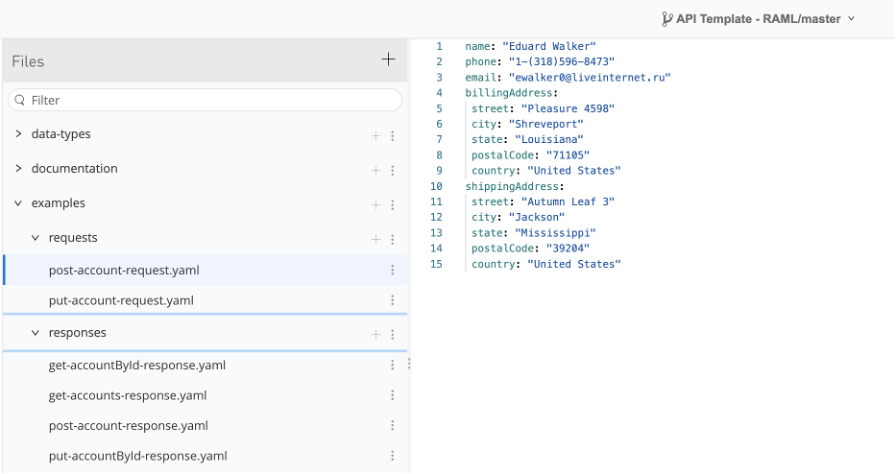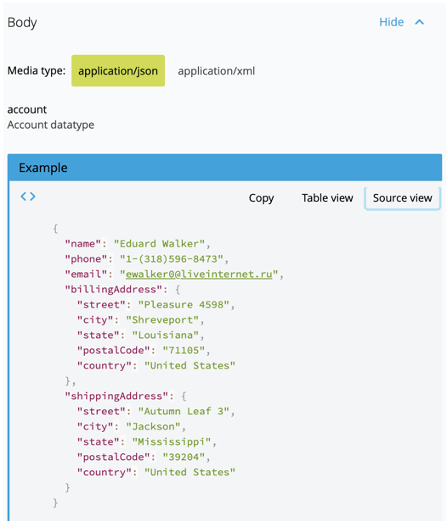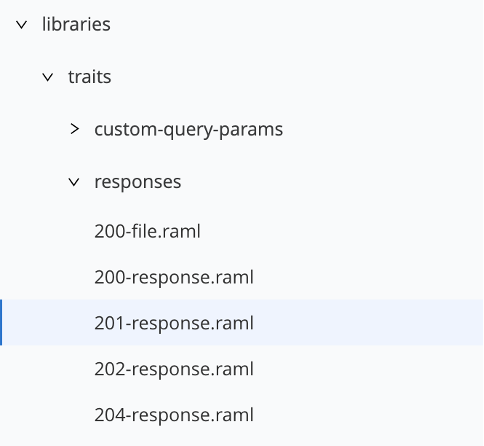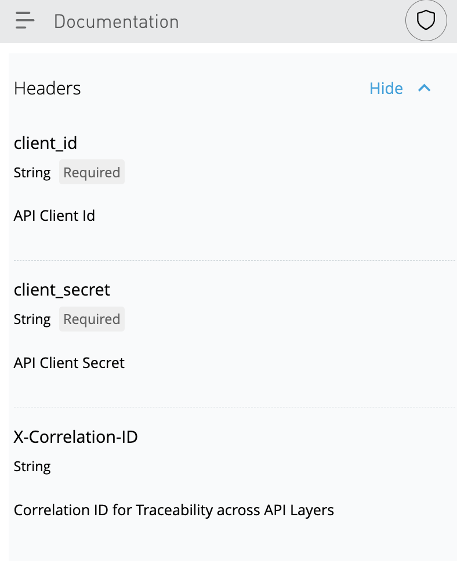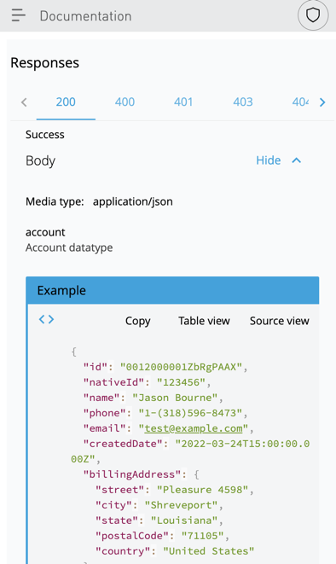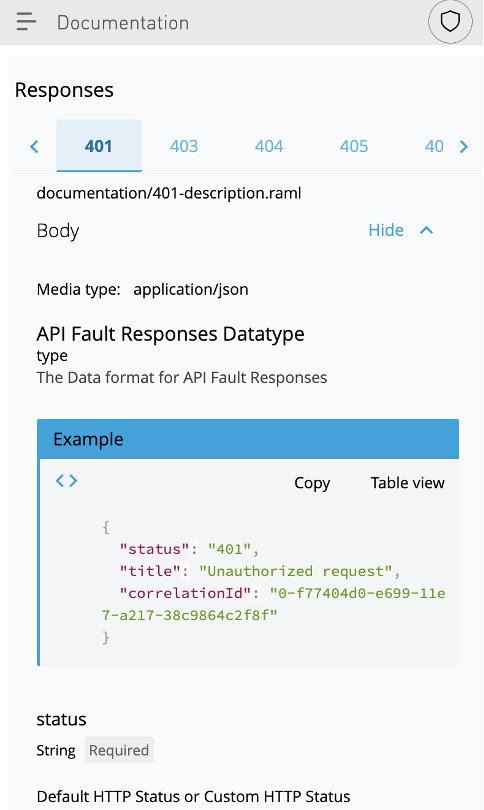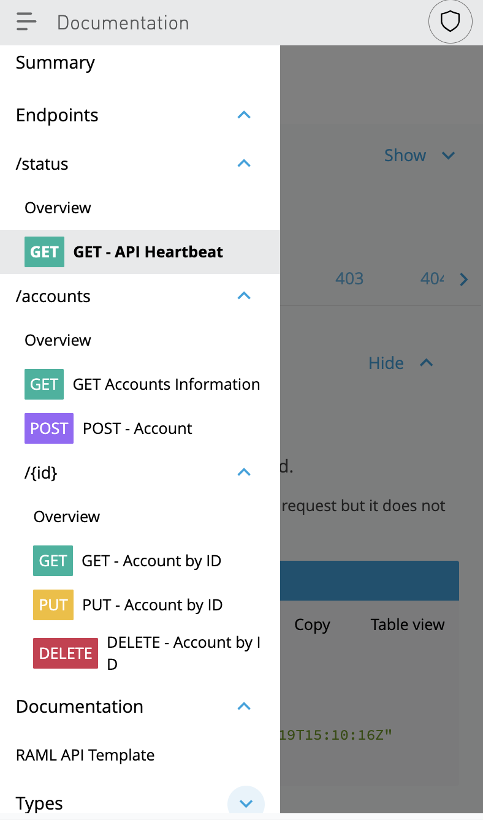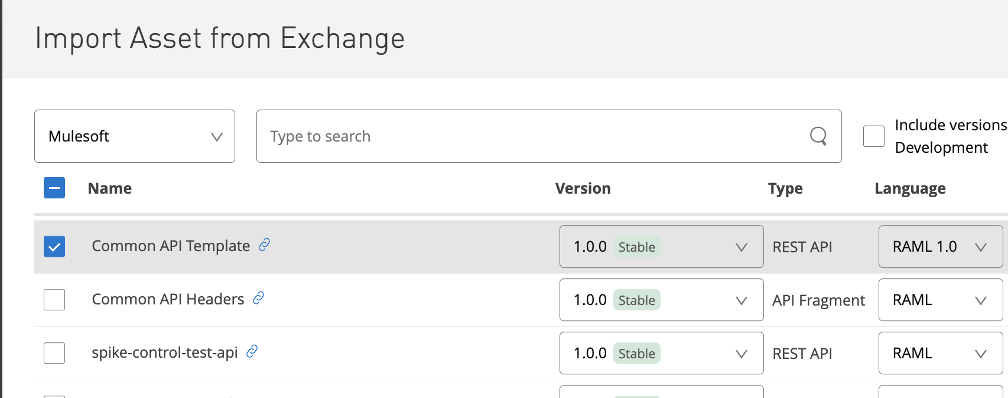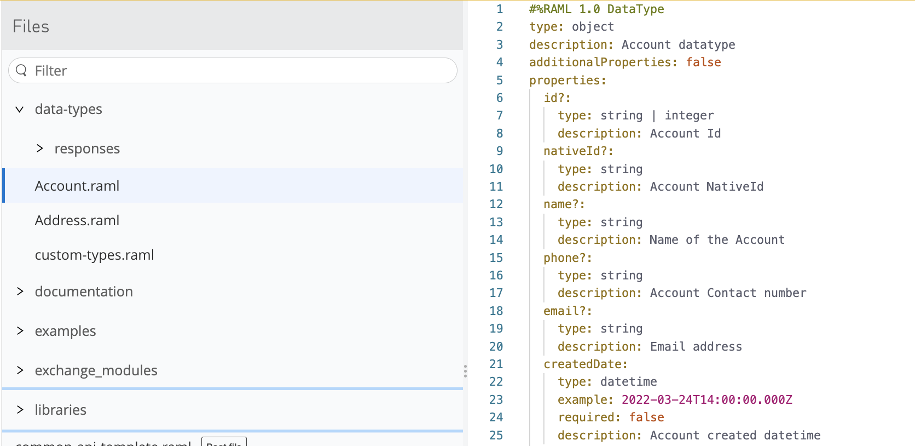Prepared by: Chinmaya Sahu
Prepared for: Platform Admins, Architects and Developers
Last updated: 11/01/2023
| Version | Date | Author | Description |
| 0.1 | 01-01-2023 | Chinmaya Ranjan Sahu | Initial version |
- Introduction
- Overview
- Common API Headers
- Common API Faults
- Common API Security
- Common API ResourceTypes
- RAML API Template - For Design Admins
- RAML API Template - For API Designers
This document is useful for both API designers and API application developers as a guide to support API design and implementation that adheres to the REST architectural style and best practices.
- Project Stakeholders
- Architects
- Consultants
- Developers
| Reference | Document Link | Version | Author |
| RAML Git | https://github.com/raml-org/raml-spec/blob/master/versions/raml-10/raml-10.md/#raml-version-10-restful-api-modeling-language | ||
| API Spec Modularization | https://github.com/raml-org/raml-spec/blob/master/versions/raml-10/raml-10.md/#modularization | ||
| RAML Data Types | https://github.com/raml-org/raml-spec/blob/master/versions/raml-10/raml-10.md/#raml-data-types |
The RAML API Template is a combination of API fragments and API Specification Template.
| Asset | Type | Description |
| Common API Template | REST API
|
API RAML Specification Template, where the fragments are referenced and the API contract is designed.
|
| Common API ResourceTypes | API Spec Fragment
|
Fragment providing the primary definition of the API resources. It allows use of any API Methods for an API Resource. In short, it defines the types of API resources.
|
| Common API Security | API Spec Fragment
|
Provides options for the Security schemas available (Basic Authentication, Client ID Authentication, JWT and OAuth 2).
|
| Common API Headers | API Spec Fragment
|
Fragment with common headers to use in all the messages implemented with the template.
|
| Common API Faults | API Spec Fragment
|
Defines the API Fault types and Fault response structures.
|
Each of these fragments and API Template could be either used as-is OR customized by API Admins as per RESTful best practices specified in your organization.
This Fragment is used to define the commonly used API Headers that are relevant to an organization’s RESTful API practices. Some examples are - Region, API Key, TransactionID, Market, etc.
The default version of the fragment (Trait) defines CorrelationID as a Header (similar to usage of TransactionID).
#%RAML 1.0 Trait
description: Common Headers
headers:
X-Correlation-ID?:
type: string
description: Correlation ID for Traceability across API Layers
This API fragment captures Responses in the event of common HTTP Client and Server Errors using uniform Response Structure for better error triage.
- Platform-fault.raml - Platform Fault Data Type. Specifies the common error response structure. The API implementation should comply and adhere to this structure during error-handling.
#%RAML 1.0 DataType
type: object
displayName: API Fault Responses Datatype
description: The Data format for API Fault Responses
additionalProperties: false
properties:
status:
type: string
description: Default HTTP Status or Custom HTTP Status
title:
type: string
description: Short Title of the Fault or error
correlationId:
type: string
description: Event traceability identifier
detail?:
type: string
description: Fault details
- fault-responses.raml: This Trait structures the responses with HTTP fault responses and their respective response examples.
**For Design Admins - The default version can be further updated to -
- Add or remove HTTP status codes
- Update Fault response structure as per organization’s RESTful best practices
RAML Security Schemes
RAML Supports the following built-in security scheme types:
- OAuth 1.0
- OAuth 2.0
- Basic Authentication
- Digest Authentication
- Pass-Through
- x-{other}
The securedBy node in the RAML document root can apply security schemes to every method of the API. All API methods, except those having their own securedBy node, can be authenticated by any of the specified security schemes.
Refer to: https://github.com/raml-org/raml-spec/blob/master/versions/raml-10/raml-10.md/#security-schemes
The Common API Security Fragment includes a set of Custom Security Traits and Security Schemes that could be easily embedded in API specifications.
- Basic Authentication.
- Client Id Authentication.
- JWT Policy.
- OAuth 2.0 (Access Token)
Example:
#%RAML 1.0 Trait
description: Client Id Enforcement
headers:
client_id:
type: string
description: API Client Id
client_secret:
type: string
description: API Client Secret
**For Design Admins - The default version can be further updated to -
- Add or update more Security Schemes and Custom Security Traits as per Organization’s RESTful best practices.
RAML ResourceTypes
Defines reusable patterns for multiple resources and methods. A resource and method declarations are frequently repetitive. It might be preferable to define such a pattern in a single place and apply it consistently everywhere.
A resource type can specify:
- Security schemes.
- Methods
- Resources
A trait, like a method, can provide method-level nodes:
- Description
- Headers
- Query parameters
- Responses
- The Common API ResourceType Fragment primarily contains -
- REST Methods with Response traits.
- Placeholders for descriptions, types, and examples (this must be defined in the Root RAML specification).
- API Health Check resource.
- The method-collection ResourceType primarily structures API Methods and associated traits for responses, response codes, common headers, fault-responses.
method-collection.raml
#%RAML 1.0 ResourceType
get?:
description: <<getDescription>>
is: [ 200-response: {responseType: <<getResponseType>>, responseExample: <<getResponseExample>>}, fault-responses, common-headers ]
post?:
description: <<postDescription>>
body:
type: <<postBodyType>>
example: <<postBodyExample>>
is: [ 201-response: {responseType: <<postResponseType>>, responseExample: <<postResponseExample>>}, 202-response: {responseType: <<postResponseType>>, responseExample: <<postResponseExample>>}, fault-responses, common-headers ]
…
…
…
- The api-health.raml ResourceType defines a heart-beat mechanism and should be embedded to ALL APIs for enabling functional monitoring.
#%RAML 1.0 ResourceType
description: This resource provides an endpoint to monitor API Heart beat
get:
displayName: GET - API Heartbeat
description: API Heartbeat
is: [ fault-responses ]
responses:
200:
description: API Heartbeat response
body:
application/json:
example: |
{
"status": "OK",
"version": "v1",
"time": "2020-08-19T15:10:16Z"
}
- When defining resource types, it can be useful to capture patterns that manifest several levels below the inheriting resource without mandating the creation of the intermediate levels.
- To accommodate this, a resource type definition may append a question mark (?) suffix to the name of any method to declare the method as optional, resulting in the following behavior:
- Do not apply the method to the resource if it doesn't exist at the corresponding level in the resource.
- Apply the value of the method node to the resource type if the method name without the question mark is already defined, explicitly or implicitly, at the corresponding level in the resource.
**For Design Admins - The default version can be further updated to -
- Add more REST operations
- Enforce more traits
- Update response status codes
API Specification design Template using RAML and Common API Fragments.
The Root RAML file in the API specification template contains:
- API Metadata information
- Reference to each fragment (Exchange modules).
- Folders for custom data types, examples, and libraries.
- Inline documentation for Data types, ResourceTypes, Traits and Responses.
- Examples for Requests and Responses
Define the API Metadata at the beginning of the Root file.
#%RAML 1.0
title: << Add API Title >>
description: << Add API description >>
version: v1 << Add API major version >>
baseUri: https://apiname.ir-e1.cloudhub.io/api/v1
protocols: [ HTTPS ]
mediaType: [application/json, application/xml] << Add one or more Media Types for request and responses >>
Refer: https://github.com/raml-org/raml-spec/blob/master/versions/raml-10/raml-10.md/#markup-language
Add the Fragments to the specification as a Dependency -
Include the resourceTypes, Traits or data-types from the dependencies -
resourceTypes:
method-collection: !include /exchange_modules/f60c5c65-35b3-4da0-bd36-14a27c5a2737/common-api-resourcetypes/1.0.2/method-collection.raml
file-item: !include /exchange_modules/f60c5c65-35b3-4da0-bd36-14a27c5a2737/common-api-resourcetypes/1.0.2/file-input-request.raml
api-health: !include /exchange_modules/f60c5c65-35b3-4da0-bd36-14a27c5a2737/common-api-resourcetypes/1.0.2/api-health.raml
traits:
fault-responses: !include /exchange_modules/f60c5c65-35b3-4da0-bd36-14a27c5a2737/common-api-faults/1.0.2/fault-responses.raml
fault-responses-delete: !include /exchange_modules/f60c5c65-35b3-4da0-bd36-14a27c5a2737/common-api-faults/1.0.2/fault-responses-DELETE.raml
client-id-auth: !include /exchange_modules/f60c5c65-35b3-4da0-bd36-14a27c5a2737/common-api-security/1.0.1/client-id-auth.raml
common-headers: !include /exchange_modules/f60c5c65-35b3-4da0-bd36-14a27c5a2737/common-api-headers/1.0.0/common-headers.raml
Understanding RAML Data Types -
- Provides a concise and powerful way of describing the data in an API.
- Add rules for validating data against a type declaration. Valid data adheres to all rules for the type.
- Can describe a base or resource URI parameter, a query parameter, a request or response header, or a request or response body.
- Can be built-in or custom.
- Built-in type: can be used anywhere the API expects data. Refer to: https://github.com/raml-org/raml-spec/blob/master/versions/raml-10/raml-10.md/#built-in-types
- Custom type: can be defined by extending the built-in types and named and used as a built-in type.
Refer: https://github.com/raml-org/raml-spec/blob/master/versions/raml-10/raml-10.md/#raml-data-types
In the API Template, the data-types folder should be used to -
- define custom RAML DataTypes
Some best practices to keep in mind while defining custom data types -
- In-line description for the Data type and each individual fields
- Examples and Restrictions for individual fields where needed
- ALWAYS add
additionalProperties: falseto add a finite attribute limit to the respective data type - Reference other data types wherever needed
-
reference and customize imported data-types from Exchange Modules
-
define a data type Library local to the API Specification
The types defined in the Library can be referenced as API requests or responses in the Specification. In the API Template, the custom-types.raml file is a library, and references the data objects and the responses.
RAML supports either the definition of multiple examples or a single one for any given instance of a type declaration. Refer:https://github.com/raml-org/raml-spec/blob/master/versions/raml-10/raml-10.md/#defining-examples-in-raml
Supports YAML by default, JSON, and XML representations of examples.
Examples should always be defined for requests and responses that obey the respective data types.
It’s always recommended to have the examples in a neutral format like YAML. This opens up an opportunity to define multiple Media-types for requests and responses or Accept criteria.
Example of post-account-request in Documentation panel -
- The request can be made with 2 media-types - JSON and XML
- Response Traits:
- These traits define the response parameters for different HTTP status codes in the 2xx series.
- The mediatype can be updated based on each API requirement.
- Externalizes the responseType and responseExample
|
- Include the responses traits to Root file
traits:
200-response: !include libraries/traits/responses/200-response.raml
201-response: !include libraries/traits/responses/201-response.raml
202-response: !include libraries/traits/responses/202-response.raml
204-response: !include libraries/traits/responses/204-response.raml
**Important
These traits are referenced in “method-collection” ResourceType in the Common API ResourceTypes Fragment
#%RAML 1.0 ResourceType
get?:
description: <<getDescription>>
is: [ 200-response: {responseType: <<getResponseType>>, responseExample: <<getResponseExample>>}, fault-responses, common-headers ]
post?:
description: <<postDescription>>
body:
type: <<postBodyType>>
example: <<postBodyExample>>
is: [ 201-response: {responseType: <<postResponseType>>, responseExample: <<postResponseExample>>}, 202-response: {responseType: <<postResponseType>>, responseExample: <<postResponseExample>>}, fault-responses, common-headers ]
- Custom Query Params
- Add custom query params based on API design requirements
Example of Pagination Query params
#%RAML 1.0 Trait
queryParameters:
updatedAfter:
description: String of date and time between which the order were updated
type: datetime
example: 2022-03-24T14:00:00.000Z
page:
description: Requested page number of Accounts
type: integer
default: 1
itemsPerPage?:
description: Number of Accounts per page
type: integer
maximum: 50
Using the api-health resourceType, /status resource provides the heartbeat mechanism for the API that can be monitored through any reporting tool.
/status:
type: api-health
The custom resourceType makes it easy to define API resources much faster.
Based on each REST method defined in the method-collection resourceType, respective “inputs” have been externalized.
The respective data-type and examples for the request body and responses just need to be referenced from the custom data-types and examples folders.
The resourceType “enforces” RESTful best practices by -
- Mandating necessary inputs like data-type, example and descriptions
- Adding uniform fault-responses and API Headers for each API resource
/accounts:
description: |
Working with accounts:
* Fetch accounts (based on updates)
* Create accounts
type:
method-collection:
getDescription: Get all accounts based on pagination query
getResponseType: customtype.get-account-pages-resp
getResponseExample: !include /examples/responses/get-accounts-response.yaml
postDescription: Create an account
postBodyType: customtype.account
postBodyExample: !include /examples/requests/post-account-request.yaml
postResponseType: customtype.post-account-resp
postResponseExample: !include /examples/responses/post-account-response.yaml
get:
displayName: GET Accounts Information #<<Add display names>>
is: [client-id-auth, paged-accounts-query]
post:
displayName: POST - Account #<<Add display names>>
is: [client-id-auth]
Important
List of externalized Inputs per REST method in the method-collection ResourceType -
| API Method | Inputs needed |
| GET |
|
| POST | postDescription
|
| PUT | putDescription
|
| PATCH | patchDescription
|
| DELETE | deleteDescription
|
- Define each Trait inside the “is” clause in the REST method definition
get:
displayName: GET Accounts Information
is: [client-id-auth, paged-accounts-query]
post:
displayName: POST - Account
is: [client-id-auth]
With the usage of the Common API Fragments and the API template, the resulting API specification could be viewed in the Documentation panel in the Design center.
|
API Authorization and Common headers |
Success responses |
|
Fault Responses |
Full API Specification |
API Designers could readily use the RAML API Template directly after it has been published to Anypoint Exchange.
- Import API template from Anypoint Exchange
- Create Data Types and Examples
- Create the REST resource Hierarchy
- Add data types and examples to ResourceType
Create a blank API Specification in Anypoint Design Center and Import the RAMl API Specification Template from Anypoint Exchange.
Create new or Reference existing data-Types required for designing the API.
Define Examples of the respective Data-Types based on the API resources request and responses.
It is always recommended to use a neutral format like YAML for creating Request/Response Examples as it enables MULTIPLE formats in the API implementation.
Refer -
Custom Data-Types and Examples section
- The API template includes an Account Resource hierarchy use-case for reference.
- Define the API resources and respective methods using the method-collection ResourceType.
- Based on the REST Method, provide references to examples, data-types and description of the API Resource and intended operation.
- Refer API Resources](###examples) section
For Example -
/accounts:
description: |
Working with accounts:
* Fetch accounts (based on updates)
* Create accounts
type:
method-collection:
getDescription: Get all accounts based on pagination query
getResponseType: customtype.get-account-pages-resp
getResponseExample: !include /examples/responses/get-accounts-response.yaml
postDescription: Create an account
postBodyType: customtype.account
postBodyExample: !include /examples/requests/post-account-request.yaml
postResponseType: customtype.post-account-resp
postResponseExample: !include /examples/responses/post-account-response.yaml
get:
displayName: GET Accounts Information #<<Add display names>>
is: [client-id-auth, paged-accounts-query]
post:
displayName: POST - Account #<<Add display names>>
is: [client-id-auth]
